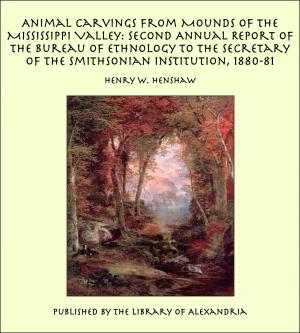Uarda: A Romance of Ancient Egypt (Complete)
Nonfiction, Religion & Spirituality, New Age, History, Fiction & Literature| Author: | Georg Ebers | ISBN: | 9781465606563 |
| Publisher: | Library of Alexandria | Publication: | March 8, 2015 |
| Imprint: | Language: | English |
| Author: | Georg Ebers |
| ISBN: | 9781465606563 |
| Publisher: | Library of Alexandria |
| Publication: | March 8, 2015 |
| Imprint: | |
| Language: | English |
By the walls of Thebes—the old city of a hundred gates—the Nile spreads to a broad river; the heights, which follow the stream on both sides, here take a more decided outline; solitary, almost cone-shaped peaks stand out sharply from the level background of the many-colored. limestone hills, on which no palm-tree flourishes and in which no humble desert-plant can strike root. Rocky crevasses and gorges cut more or less deeply into the mountain range, and up to its ridge extends the desert, destructive of all life, with sand and stones, with rocky cliffs and reef-like, desert hills. Behind the eastern range the desert spreads to the Red Sea; behind the western it stretches without limit, into infinity. In the belief of the Egyptians beyond it lay the region of the dead. Between these two ranges of hills, which serve as walls or ramparts to keep back the desert-sand, flows the fresh and bounteous Nile, bestowing blessing and abundance; at once the father and the cradle of millions of beings. On each shore spreads the wide plain of black and fruitful soil, and in the depths many-shaped creatures, in coats of mail or scales, swarm and find subsistence. The lotos floats on the mirror of the waters, and among the papyrus reeds by the shore water-fowl innumerable build their nests. Between the river and the mountain-range lie fields, which after the seed-time are of a shining blue-green, and towards the time of harvest glow like gold. Near the brooks and water-wheels here and there stands a shady sycamore; and date-palms, carefully tended, group themselves in groves. The fruitful plain, watered and manured every year by the inundation, lies at the foot of the sandy desert-hills behind it, and stands out like a garden flower-bed from the gravel-path. In the fourteenth century before Christ—for to so remote a date we must direct the thoughts of the reader—impassable limits had been set by the hand of man, in many places in Thebes, to the inroads of the water; high dykes of stone and embankments protected the streets and squares, the temples and the palaces, from the overflow.Canals that could be tightly closed up led from the dykes to the land within, and smaller branch-cuttings to the gardens of Thebes. On the right, the eastern bank of the Nile, rose the buildings of the far-famed residence of the Pharaohs. Close by the river stood the immense and gaudy Temples of the city of Amon; behind these and at a short distance from the Eastern hills—indeed at their very foot and partly even on the soil of the desert—were the palaces of the King and nobles, and the shady streets in which the high narrow houses of the citizens stood in close rows.
By the walls of Thebes—the old city of a hundred gates—the Nile spreads to a broad river; the heights, which follow the stream on both sides, here take a more decided outline; solitary, almost cone-shaped peaks stand out sharply from the level background of the many-colored. limestone hills, on which no palm-tree flourishes and in which no humble desert-plant can strike root. Rocky crevasses and gorges cut more or less deeply into the mountain range, and up to its ridge extends the desert, destructive of all life, with sand and stones, with rocky cliffs and reef-like, desert hills. Behind the eastern range the desert spreads to the Red Sea; behind the western it stretches without limit, into infinity. In the belief of the Egyptians beyond it lay the region of the dead. Between these two ranges of hills, which serve as walls or ramparts to keep back the desert-sand, flows the fresh and bounteous Nile, bestowing blessing and abundance; at once the father and the cradle of millions of beings. On each shore spreads the wide plain of black and fruitful soil, and in the depths many-shaped creatures, in coats of mail or scales, swarm and find subsistence. The lotos floats on the mirror of the waters, and among the papyrus reeds by the shore water-fowl innumerable build their nests. Between the river and the mountain-range lie fields, which after the seed-time are of a shining blue-green, and towards the time of harvest glow like gold. Near the brooks and water-wheels here and there stands a shady sycamore; and date-palms, carefully tended, group themselves in groves. The fruitful plain, watered and manured every year by the inundation, lies at the foot of the sandy desert-hills behind it, and stands out like a garden flower-bed from the gravel-path. In the fourteenth century before Christ—for to so remote a date we must direct the thoughts of the reader—impassable limits had been set by the hand of man, in many places in Thebes, to the inroads of the water; high dykes of stone and embankments protected the streets and squares, the temples and the palaces, from the overflow.Canals that could be tightly closed up led from the dykes to the land within, and smaller branch-cuttings to the gardens of Thebes. On the right, the eastern bank of the Nile, rose the buildings of the far-famed residence of the Pharaohs. Close by the river stood the immense and gaudy Temples of the city of Amon; behind these and at a short distance from the Eastern hills—indeed at their very foot and partly even on the soil of the desert—were the palaces of the King and nobles, and the shady streets in which the high narrow houses of the citizens stood in close rows.















